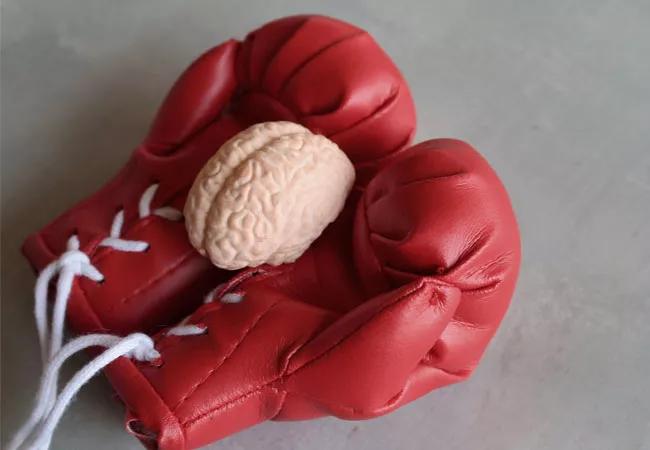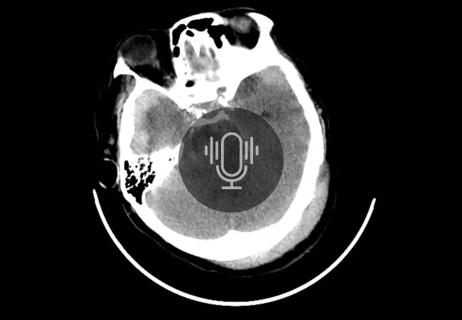Criteria-based diagnosis of traumatic encephalopathy syndrome predicts changes in brain volumes and cognition

The first longitudinal study of new clinical diagnostic criteria for traumatic encephalopathy syndrome (TES) among at-risk individuals shows that the criteria can identify a group more likely to have worsening brain volume changes and cognitive performance over time.
Advertisement
Cleveland Clinic is a non-profit academic medical center. Advertising on our site helps support our mission. We do not endorse non-Cleveland Clinic products or services. Policy
The study, which evaluated the 2021 diagnostic criteria for TES (ccTES) from the National Institute of Neurological Disorders and Stroke (NINDS), was published in the June 28 online issue of Neurology.
“Over six years of observation, we found a significant association between TES and regional MRI-based volumetric measurements and cognitive decline,” says study co-author Charles Bernick, MD, a staff neurologist with the Cleveland Clinic Lou Ruvo Center for Brain Health in Las Vegas. “While these findings should not be used in a clinical setting at this time, they provide a strong foundation for hypothesis generation to inform future studies.”
The investigation, a secondary analysis of Cleveland Clinic’s Professional Athletes Brain Health Study (PABHS), is noteworthy because it is the first to examine what happens longitudinally in individuals who fulfill the ccTES. Most of the data analyzed by the NINDS consensus panel that developed the ccTES came from retrospective reviews involving deceased athletes, mostly former American football players.
TES is characterized by cognitive impairment, behavioral dysregulation and other supportive features. It is believed to be the clinical presentation of chronic traumatic encephalopathy (CTE), a neurodegenerative disorder related to repetitive head impacts that can only be diagnosed by neuropathological brain examination at autopsy.
In 2021, an NINDS panel issued the clinical diagnostic criteria (i.e., ccTES) at the center of the current study, which consist of the following:
Advertisement
The first three criteria above must be fulfilled for a diagnosis of TES, after which the individual’s level of functioning is graded, including evaluation for dementia.
“Validation of the ccTES could lead to their use in epidemiological studies or clinical trials to classify living individuals exposed to extensive repetitive head impacts,” Dr. Bernick notes.
The PABHS, from which data for the current analysis were drawn, is an ongoing study of professional boxers, mixed martial arts fighters and other contact sport athletes that was launched at the Lou Ruvo Center for Brain Health in 2011. Participants undergo annual MRI and cognitive testing, as well as blood testing for neurofilament light and tau levels. The PABHS investigators have previously shown that it was possible to prospectively detect loss of brain volume in the hippocampus and amygdala in a cohort of retired fighters over a multiyear period.
The 130 male professional fighters in the current substudy were tested using the ccTES criteria on their first PABHS visit after reaching age 35 or retiring. As adjudicated by four PABHS clinicians, 52 of the men (40%) were diagnosed with TES and 78 (60%) were deemed TES-negative. The aim of the analysis was to compare these TES-positive and TES-negative groups by brain volumes recorded on MRI and memory and executive function performance measured on the PABHS cognitive battery.
Between April 2011 and November 2015, the fighters underwent T1-weighted anatomical brain MRI annually. Ten regions of interest were specified for analysis: hippocampus, corpus callosum, lateral and inferior lateral ventricles, white matter, total gray matter, and subcortical gray matter, including the thalamus, caudate and putamen. Cognitive testing was performed for verbal memory, processing speed, psychomotor speed and reaction time.
Advertisement
Statistical analysis showed that the TES-positive fighters were significantly older (mean of 45.87 vs. 41.31 years), were less well educated (mean of 12.69 vs. 13.90 years) and had participated in more professional fights (mean of 36.15 vs. 20.96) than the TES-negative group.
On MRI, the TES-positive fighters had significantly larger volumes in the lateral and inferior lateral ventricles and significantly smaller volumes in the thalamus, putamen, hippocampus, white and gray matter, and corpus callosum.
Volumetric changes in the lateral and inferior lateral ventricles were significantly greater in TES-positive fighters versus TES-negative fighters. Volumetric trends for the hippocampus decreased significantly over time in the TES-positive group while changing insignificantly in the TES-negative group.
After controlling for age, sex, education and race, the investigators also found significant between-group total mean differences in reaction times and all cognitive measures:
“The ccTES clearly distinguished group differences in longitudinal presentation of volumetric loss in select brain regions and cognitive decline in professional fighters aged 35 and over,” Dr. Bernick observes. “Much of the data used to develop these criteria came from studies of former football players. Further investigation is warranted to validate these criteria and determine if they have clinical value for predicting cognitive decline in professional sports beyond football.”
Advertisement
Advertisement

New guidelines from Brain Trauma Foundation urge early and aggressive treatment

Case report of a young man with severe traumatic brain injury and cognitive deficits

Care guidelines have been crucial to progress in TBI care over the past 25 years

Clinical complexity demands personalized care strategies

Promising preclinical research indicates functional motor recovery is durable

Cleveland Clinic researchers collaborate with Microsoft to create a product ready for the field

Research by Cleveland Clinic and Sports Data Labs to improve health and function in everyday patients as well as elite athletes

Cleveland Clinic’s Esports Medicine team weighs in on importance of multidisciplinary care